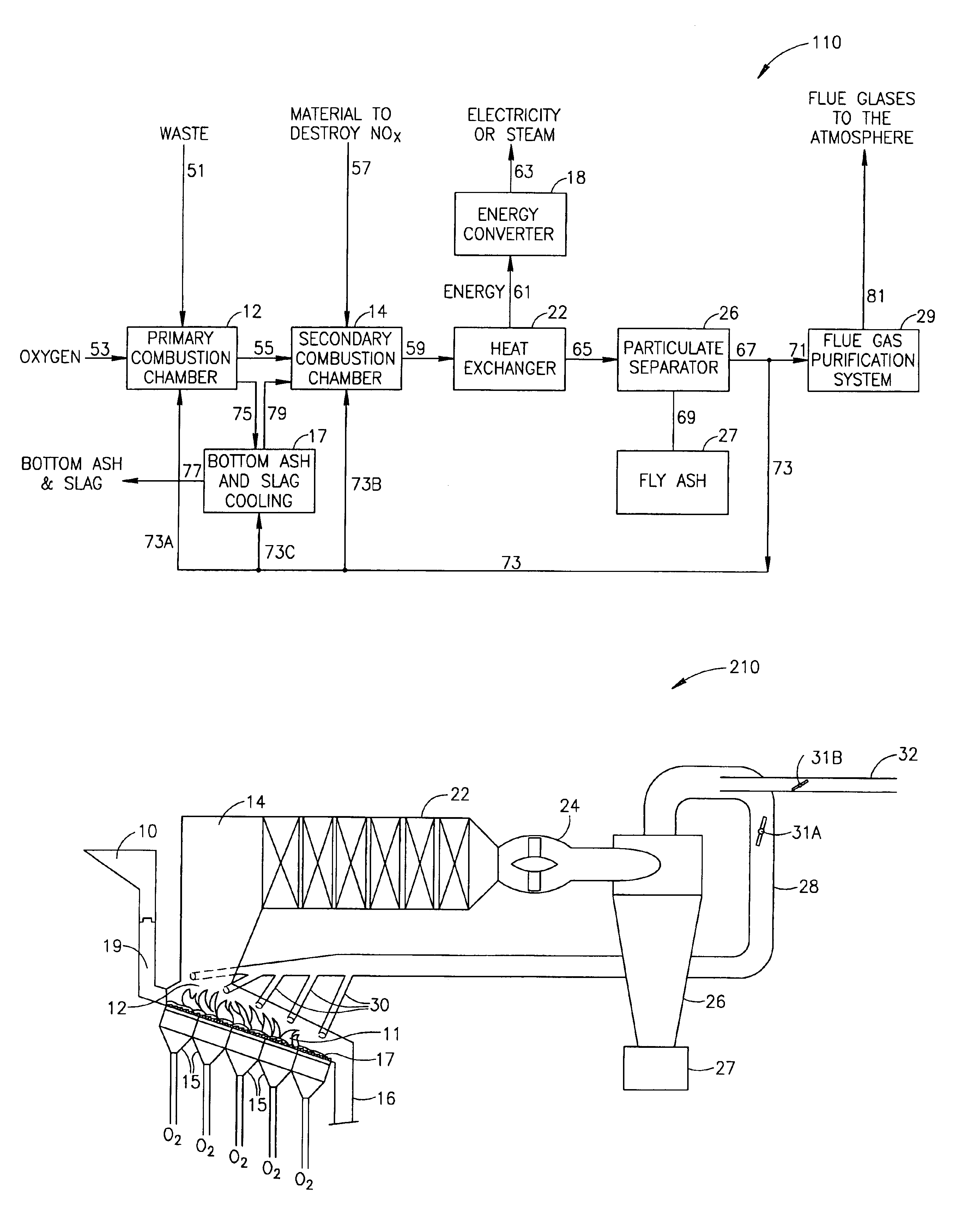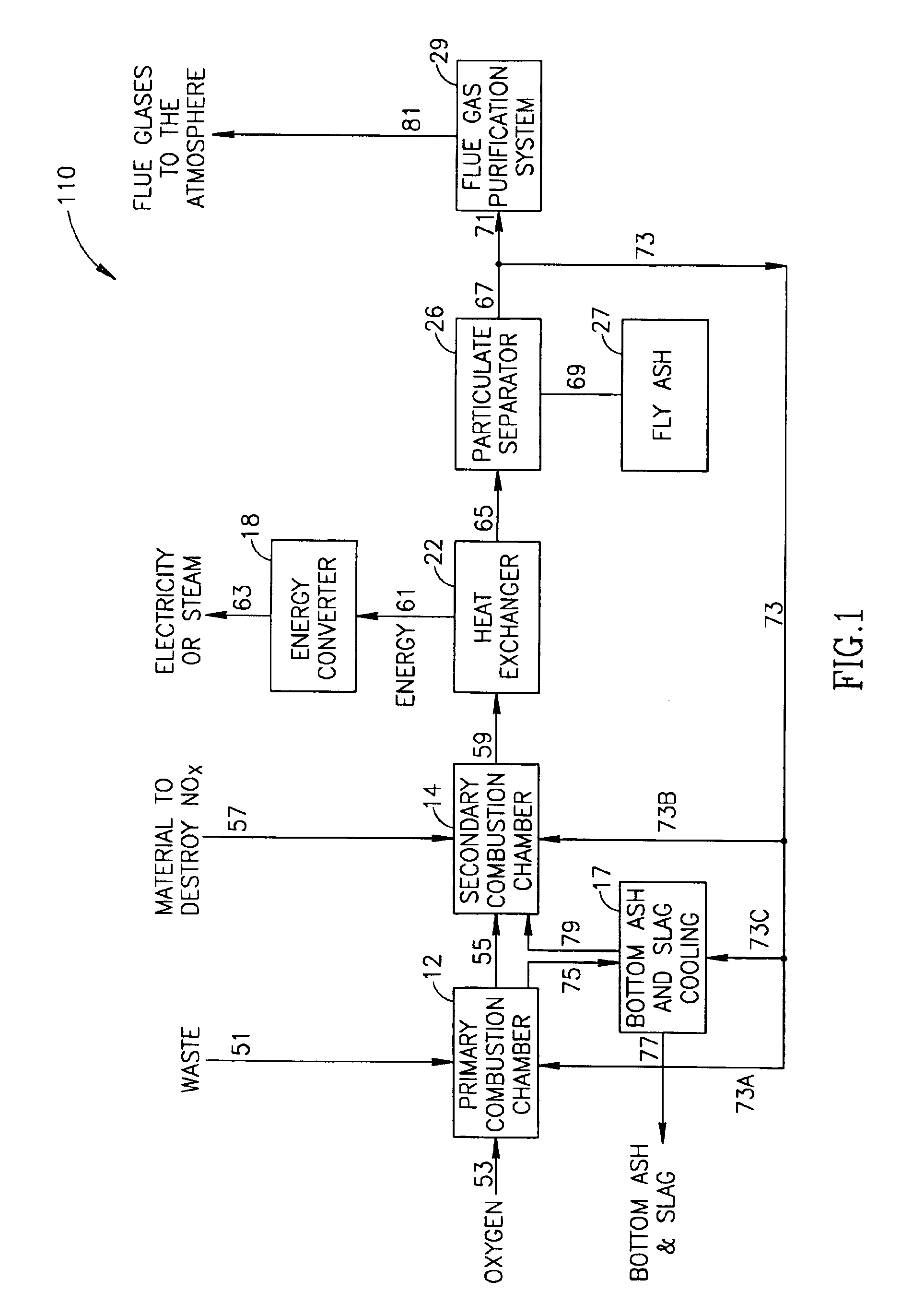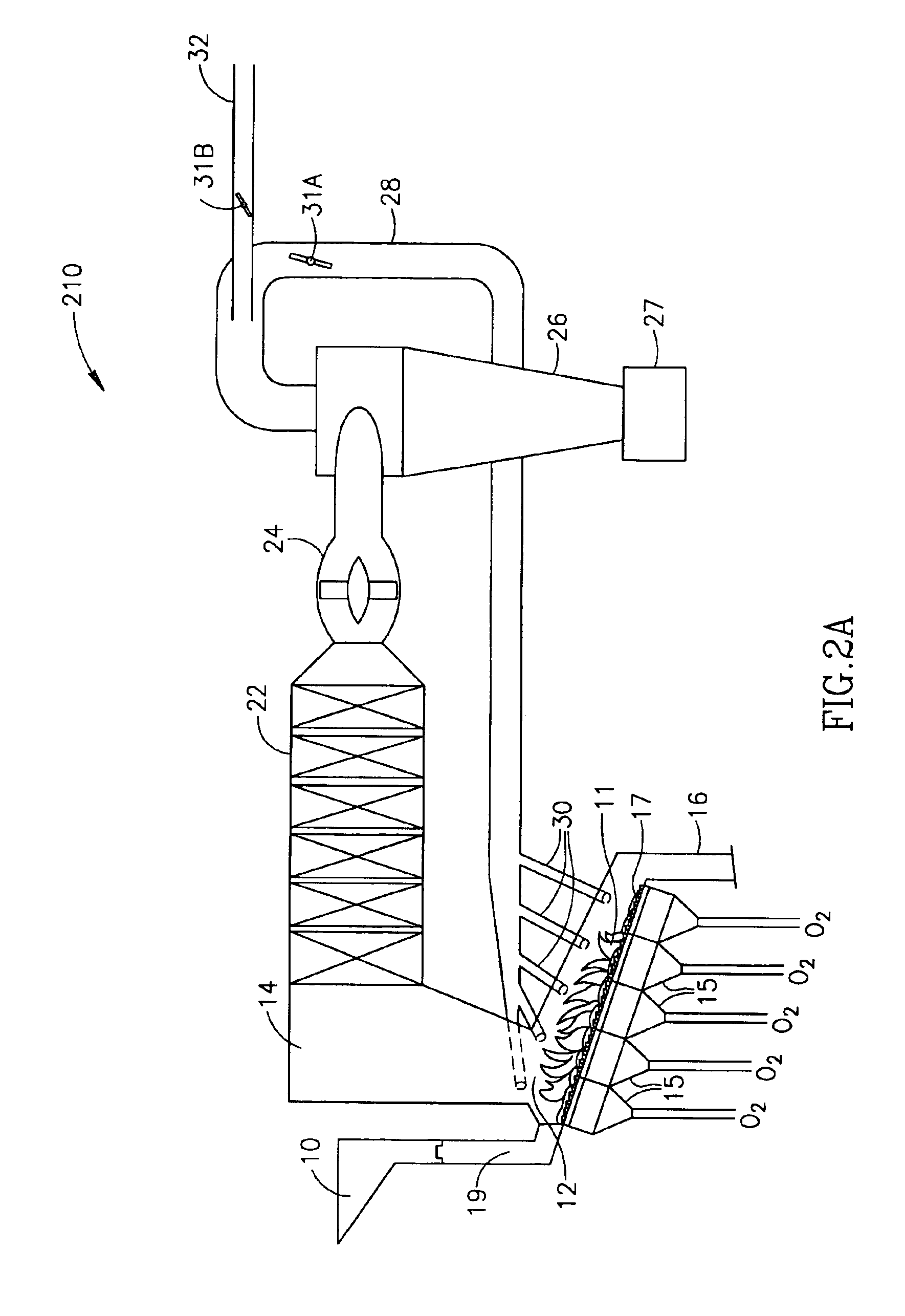Incineration process using high oxygen concentrations
- Summary
- Abstract
- Description
- Claims
- Application Information
AI Technical Summary
Benefits of technology
Problems solved by technology
Method used
Image
Examples
Embodiment Construction
[0039]Reference is now made to FIG. 1, which shows a flow diagram of a preferred embodiment of an incineration process generally referenced 110, in accordance with the present invention. Process 110 is particularly preferred when used to incinerate industrial, commercial and / or biological waste. The description herein below, as well as the accompanying Figures, describe the process in terms of such waste. However, while the above process 110 has been discussed as a process for the incineration of waste, the system can also be used to burn any fuel, producing energy in a clean, cost efficient manner. In lieu of municipal or industrial waste, process 110 can be used to burn fuels such as natural gas, fuel oil, and coal. These fuels, however, are to be viewed as non-limiting examples.
[0040]Process 110 includes a primary combustion chamber (PCC) 12 into which waste is fed 51 via a conduit (not shown). Inlet gases containing at least 50 vol. %, preferably at least 80 vol. %, and most pre...
PUM
 Login to View More
Login to View More Abstract
Description
Claims
Application Information
 Login to View More
Login to View More - R&D
- Intellectual Property
- Life Sciences
- Materials
- Tech Scout
- Unparalleled Data Quality
- Higher Quality Content
- 60% Fewer Hallucinations
Browse by: Latest US Patents, China's latest patents, Technical Efficacy Thesaurus, Application Domain, Technology Topic, Popular Technical Reports.
© 2025 PatSnap. All rights reserved.Legal|Privacy policy|Modern Slavery Act Transparency Statement|Sitemap|About US| Contact US: help@patsnap.com



